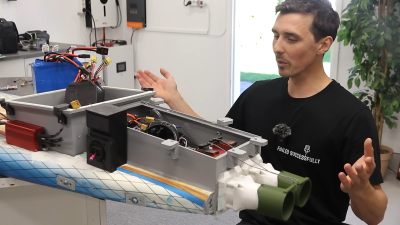The problem with air quality is that you can’t really tell how good or bad it is just by looking…unless it’s really bad, that is. It’s usually more helpful to have some kind of sensor that can tell you what the deal is. To that end, [Arnov Sharma] built a neat air quality monitor with a fun twist.
A Raspberry Pi Pico W acts as the heart of the build, armed with an SGP40 gas sensor. This sensor is intended for monitoring total volatile organic compounds in the air, which can be a useful measure of air quality in at least one dimension. It reports a simple air quality score from 0 to 500, based on a 1-1000 ppm ethanol equivalent reading. Based on the sensor’s output, the Pi Pico drives an LED matrix display — setting it green for good quality air, yellow for moderate, and red for poor air quality (i.e. high VOC content). The fun part is that rather than just show a simple color, the display plays Conway’s Game of Life to create an animated visual. We’d love it even more if poor air quality lead to the premature death of individual cells, making it even more interactive.
We’ve featured other air quality monitors before; often, it’s desirable to monitor CO2 levels to determine whether more ventilation is needed.

















